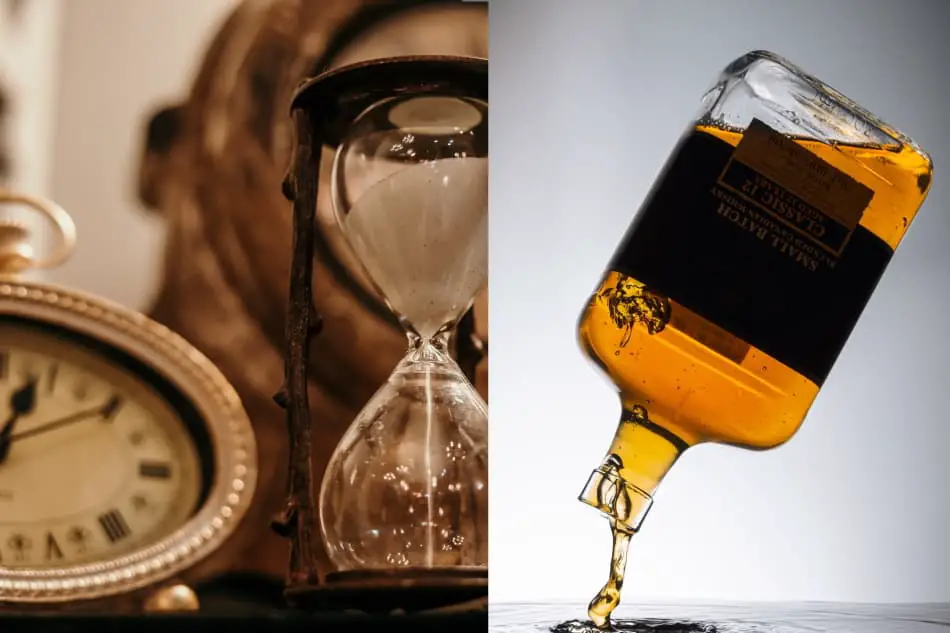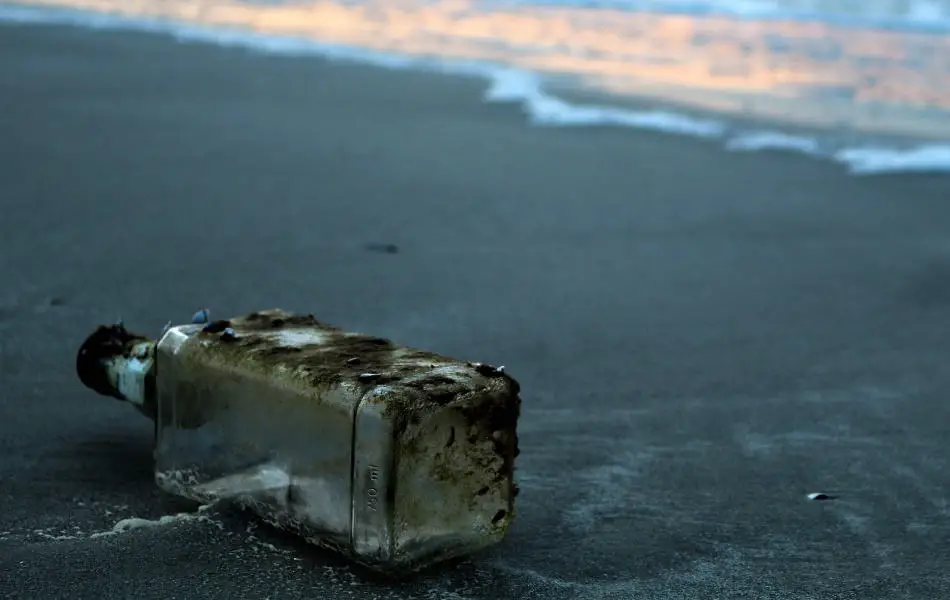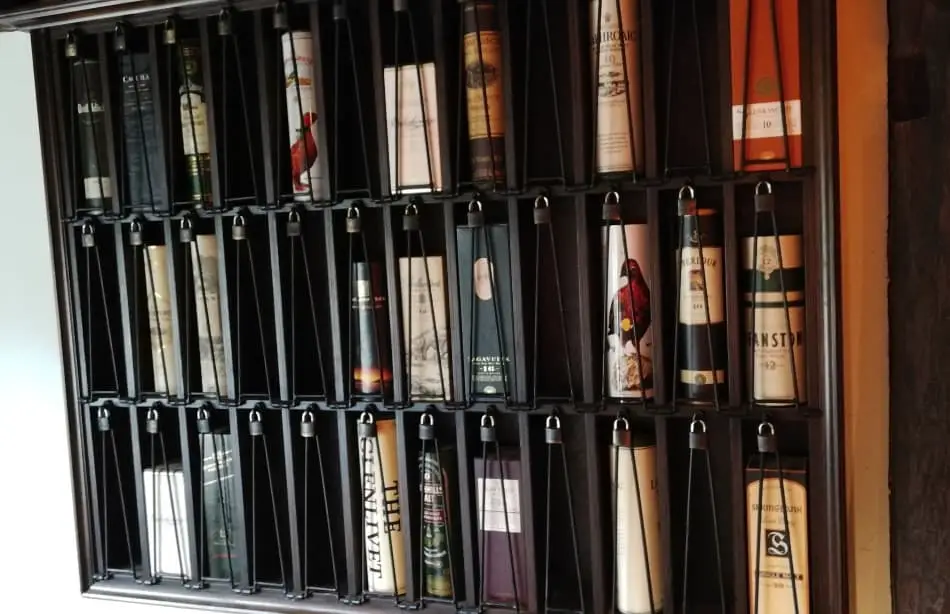It’s not unusual for whiskey drinkers to have several different bottles of whiskey in their bar, some sealed, some opened, and in various states: just opened, almost finished and not going to finish even if you paid me. Either way, it’s important to know whether any of them can go bad and if so how to stop it.
Whiskey does not go bad if stored properly. However, whiskey does go bad if it’s exposed to direct light for a month or two, it evaporates if left for a long time in the heat, and its flavors change between six months to two years after opening.
In the rest of this article, I’ll explain why whiskey doesn’t go bad under normal circumstances and go into more detail about those things that can make whiskey go bad and what you can do to stop it.

Why Whiskey Doesn’t Go Bad Under Normal Circumstances
There are two reasons why, under normal circumstances, whiskey doesn’t go bad. The first is because it only ages in casks and the second is because it contains a high level of alcohol.
Because It Only Ages in Casks
Since whiskey only ages in casks, it won’t continue to age in the bottle until it deteriorates and goes bad. Whiskey is placed into casks to mature for at least three years but usually for longer – sometimes even decades. During that time, it picks up flavors from the wood of the barrel it’s being aged in, and the longer its aged the more flavors it picks up.
This means that once it’s no longer in the barrel the whiskey can’t continue to pick up flavors and age. That’s why nothing happens to whiskey when it’s in the bottle. Since it doesn’t have access to its source of flavors it can’t change, and if it can’t change, it can’t deteriorate and go bad.
This is in contrast to wine that, because it’s made from fermented grapes which has continuing chemical reactions even when it’s removed from the barrel it’s aged in, continues to evolve and change in the bottle. This means that eventually (about five years, unless it’s of a very high quality) wine will deteriorate and go bad by turning into vinegar.
Because It Contains a High Level of Alcohol
The second reason whiskey doesn’t go bad is because of its high level of alcohol – anywhere between 40% – 68%ABV, which helps preserve it. The high level of alcohol freezes (not literally obviously) the whiskey’s esters, congeners and volatile alcohols that are responsible for much of its taste, putting them in a type of suspended animation, so they can’t go bad.
The whiskey’s high alcohol content level also makes it an inhospitable environment for the bacteria responsible for food deteriorating, so it’s no wonder then that it’s nearly impossible for whiskey to go bad.
Three Things That Do Make Whiskey Go Bad

Even though as explained, it’s pretty difficult to damage whiskey it is possible for it to go bad under the following three circumstances. Exposure to direct light or sunlight, evaporation, and exposure to oxygen.
1. Exposure To Direct Light or Sunlight
Whiskey placed in direct light or worse, direct sunlight will go bad within one or two months.
That’s because the direct light or sunlight creates a chemical reaction in the volatile compounds of the whiskey which causes them to break down, and the flavor to degrade. The whiskey will taste much harsher, possibly even of rubber, paint thinner or rotten fruit.
2. Evaporation
Whiskey stored for a very long time in a bottle without an airtight seal will not last indefinitely because some of it will evaporate. How much whiskey will evaporate will depend on how airtight the seal of the bottle is, how hot the environment in which you’re storing your bottle is and how long your whiskey is stored under those conditions.
The good news is that evaporation is usually quite slow, so this will only be an issue for those storing their whiskey long term. It takes about a decade for evaporation to become noticeable, and 30 – 40 years for it to be significant.
3. Exposure to Oxygen
Whiskey that’s exposed to oxygen will sooner or later oxidize. That’s when oxygen binds to one chemical compound and turns it into another, and in whiskey that means binding to one flavor compound and turning it into another. Whiskey that’s gone bad in this way is not dangerous to drink – it’s still drinkable, but it does mean that it won’t taste the way it’s supposed to.
Oxidation starts as soon as your whiskey becomes exposed to air – which is usually when you first open the bottle, but it doesn’t change the flavors of your whiskey immediately. That takes anywhere from six months to two years depending on the following:
- Headspace – the empty space in your bottle between the cork or lid and the whiskey that’s actually air.
- Seal of the bottle – whether the seal of your bottle is tight, loose or damaged.
- Storage environment – whether your bottle is stored in a stable environment or one with fluctuating temperatures.
The common denominator of all three is how much air can get to your whiskey. More headspace, a loose or damaged seal and being stored in an environment with fluctuating temperatures all mean more air will get to your whiskey and its flavors will change sooner. Less headspace, a tightly sealed lid and being stored in a stable environment all mean less air will get to your whiskey and it will take longer for its flavors to change.
So, for example, if there’s an inch or two of headspace there won’t be much effect on the whiskey’s flavors for at least a year, but if three quarters of the bottle is air, the quality of the whiskey inside will degrade in about a month.
How To Ensure Your Whiskey Doesn’t Go Bad

To ensure your whiskey doesn’t go bad, you need to store it in a way that prevents the above things from damaging it. That means:
- Away from direct light and direct sunlight
- In a cool temperature – 15°-20°C or 59°-68°F
- In a stable environment
- In a bottle with an airtight seal
I have written a more detailed article about how to store whiskey, which you can find here.
It’s pretty easy to store your whiskey away from direct light and in a cool, stable environment, however, it’s not so easy to store your whiskey in a bottle with an airtight seal to prevent oxidation and evaporation. That’s because the seal of unsealed bottles of whiskey may not be 100% airtight, and opened bottles of whiskey are not airtight at all and often have plenty of headspace. Fortunately, there is something you can do about this.
For opened bottles of whiskey simply keeping the lid on tightly will slow the process of oxidation. Of course, that won’t help once there’s a lot of headspace and you’ll need to transfer your whiskey into a smaller bottle to reduce it. You can do this repeatedly each time the headspace becomes too much, but there will come a time when you won’t have a small enough bottle and you’re only solution will be to finish your whiskey as soon as possible.
To ensure that no air gets into unsealed bottles of whiskey whose seals might not be 100% airtight, you can add an additional seal. This can be an additional cap on top of the lid or cork or by dipping your bottle in wax. However, these methods can damage the bottle and the underlying seal, and so are not the best solutions, especially if the whiskey is valuable.
A better solution is to use parafilm. This is a film made from a blend of waxes and polyolefins that’s semi-transparent and flexible. It’s malleable, non-toxic, tasteless, odorless, and self-sealing. You can wrap it around the lid making it airtight and it won’t harm the underlying seal. The only downside is that after some time it becomes brittle and less effective, so it needs replacing every five to seven years.
You can buy All Purpose Laboratory Parafilm on Amazon here (affiliate link).
(affiliate link).

